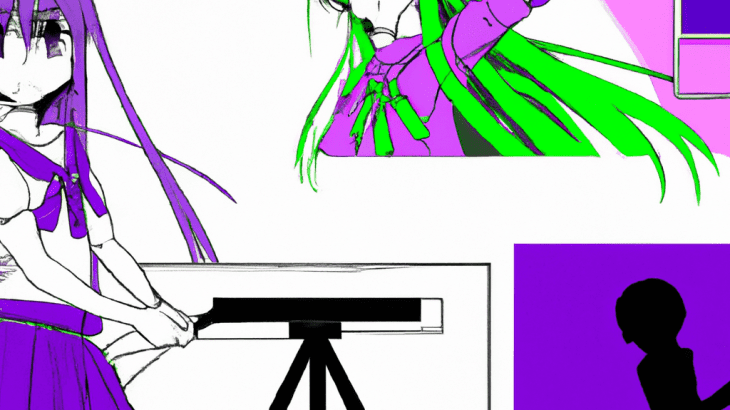The Evolution of Anime: From Hand-drawn Animation to Digitally Animated Masterpieces
From the adrenaline-inducing action scenes of “Dragon Ball Z” to the heart-wrenching drama of “Your Lie in April,” anime has captivated audiences worldwide for decades. With its unique storytelling techniques, vibrant visual style, and diverse range of genres, anime has become a cultural phenomenon that continues to influence and inspire people of all ages. In this article, we’ll take a journey through the evolution of anime, exploring how it has evolved from traditional hand-drawn animation to the visually stunning digitally animated masterpieces we see today.
1. The Birth of Anime: Hand-drawn Marvels
Let’s go back to the early days of anime, where hand-drawn animation reigned supreme. In the mid-20th century, acclaimed anime pioneers like Osamu Tezuka revolutionized the industry with their unique artistic styles and captivating narratives. Tezuka’s iconic works like “Astro Boy” and “Kimba the White Lion” set the foundation for the anime industry as we know it today.
During this era, anime production relied heavily on the meticulous process of hand-drawing each frame. This labor-intensive method required incredible attention to detail and patience from animators, resulting in visually stunning works of art that became the hallmark of classic anime.
2. Technological Advancements: Enter Digital Animation
As technology advanced, so did the world of anime. The introduction of computers and digital tools paved the way for a new era in anime production. Traditional hand-drawn animation gradually gave way to digital animation techniques, allowing for greater efficiency and creativity in the production process.
With the advent of software like Adobe Flash and Toon Boom, animators could now create smoother and more dynamic movement, enhancing the overall visual experience for viewers. This transition also opened doors for more experimental styles and artistic expressions, pushing the boundaries of what anime could achieve.
3. The Rise of 3D Animation and CGI
In recent years, 3D animation and computer-generated imagery (CGI) have become increasingly prevalent in anime. While some purists may argue that these techniques dilute the traditional anime aesthetic, others appreciate the innovation and enhanced visual quality that 3D animation brings to the table.
With the rise of anime films like “Your Name” and “Weathering with You,” which expertly blend traditional hand-drawn animation with breathtaking CGI, a new era of anime storytelling has emerged. Productions like “Attack on Titan” showcase the seamless integration of 3D animation with traditional 2D art, creating stunning action sequences that leave audiences in awe.
4. The Intersection of Anime and Virtual Reality
Looking ahead, the future holds exciting possibilities for anime enthusiasts. With the advent of virtual reality (VR) technology, we can anticipate immersive experiences that allow fans to step into their favorite anime worlds like never before.
Imagine putting on a VR headset and finding yourself in the midst of a high-octane battle in “One Piece” or exploring the enchanting landscapes of “Spirited Away.” As technology continues to evolve, we may see anime evolve alongside it, blurring the lines between fiction and reality.
Conclusion
Anime has come a long way since its humble beginnings as hand-drawn animation. From the exceptional craftsmanship of classic anime to the mesmerizing visual effects of modern digitally animated masterpieces, anime continues to captivate and inspire viewers around the globe.
As we embrace technological advancements, the future of anime is bound to bring even more awe-inspiring experiences. Whether it’s through the seamless integration of CGI or the immersive world of virtual reality, anime enthusiasts can look forward to being transported to new realms of imagination and storytelling.
- What is your favorite era of anime?
- Do you prefer hand-drawn or digitally animated anime?
- How do you feel about the rise of 3D animation in anime?
- Would you like to experience anime in virtual reality?
Let us know your thoughts in the comments below!
